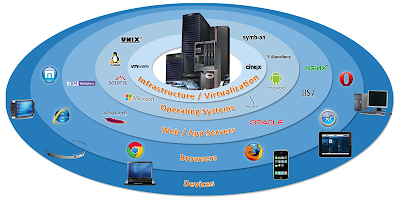Top 100 Frequently asked Software Testing Interview Questions and Answers - Part 1
1. What is the MAIN benefit of designing tests early in the life cycle?
It helps prevent defects from being introduced into the code.
2. What is risk-based testing?
Risk-based testing is the term used for an approach to creating a test strategy that is based on prioritizing tests by risk. The basis of the approach is a detailed risk analysis and prioritizing of risks by risk level. Tests to address each risk are then specified, starting with the highest risk first.
3. A wholesaler sells printer cartridges. The minimum order quantity is 5. There is a 20% discount for orders of 100 or more printer cartridges. You have been asked to prepare test cases using various values for the number of printer cartridges ordered. Which of the following groups contain three test inputs that would be generated using Boundary Value Analysis?
4, 5, 99
4. What is the KEY difference between preventative and reactive approaches to testing?
Preventative tests are designed early; reactive tests are designed after the software has been produced.
5. What is the purpose of exit criteria?
To define when a test level is complete.
6. What determines the level of risk?
The likelihood of an adverse event and the impact of the event
7. When is used Decision table testing?
Decision table testing is used for testing systems for which the specification takes the form of rules or cause-effect combinations. In a decision table the inputs are listed in a column, with the outputs in the same column but below the inputs. The remainder of the table explores combinations of inputs to define the outputs produced.
Learn More About Decision Table Testing Technique in the Video Tutorial here
8. What is the MAIN objective when reviewing a software deliverable?
To identify defects in any software work product.
9. Which of the following defines the expected results of a test? Test case specification or test design specification.
Test case specification.
10. Which is a benefit of test independence?
It avoids author bias in defining effective tests.
11. As part of which test process do you determine the exit criteria?
Test planning.
12. What is beta testing?
Testing performed by potential customers at their own locations.
13. Given the following fragment of code, how many tests are required for 100% decision coverage?
if width > length
then biggest_dimension = width
if height > width
then biggest_dimension = height
end_if
else biggest_dimension = length
if height > length
then biggest_dimension = height
end_if
end_if
14. You have designed test cases to provide 100% statement and 100% decision coverage for the following fragment of code. if width > length then biggest_dimension = width else biggest_dimension = length end_if The following has been added to the bottom of the code fragment above. print "Biggest dimension is " & biggest_dimension print "Width: " & width print "Length: " & length How many more test cases are required?
None, existing test cases can be used.
15. Rapid Application Development ?
Rapid Application Development (RAD) is formally a parallel development of functions and subsequent integration. Components/functions are developed in parallel as if they were mini projects, the developments are time-boxed, delivered, and then assembled into a working prototype. This can very quickly give the customer something to see and use and to provide feedback regarding the delivery and their requirements. Rapid change and development of the product is possible using this methodology. However the product specification will need to be developed for the product at some point, and the project will need to be placed under more formal controls prior to going into production.
16. What is the difference between Testing Techniques and Testing Tools?
Testing technique: – Is a process for ensuring that some aspects of the application system or unit functions properly there may be few techniques but many tools.
Testing Tools: – Is a vehicle for performing a test process. The tool is a resource to the tester, but itself is insufficient to conduct testing
Learn More About Testing Tools here
17. We use the output of the requirement analysis, the requirement specification as the input for writing …
User Acceptance Test Cases
18. Repeated Testing of an already tested program, after modification, to discover any defects introduced or uncovered as a result of the changes in the software being tested or in another related or unrelated software component:
Regression Testing
19. What is component testing ?
Component testing, also known as unit, module and program testing, searches for defects in, and verifies the functioning of software (e.g. modules, programs, objects, classes, etc.) that are separately testable. Component testing may be done in isolation from the rest of the system depend-ing on the context of the development life cycle and the system. Most often stubs and drivers are used to replace the missing software and simulate the interface between the software components in a simple manner. A stub is called from the software component to be tested; a driver calls a component to be tested.
20. What is functional system testing ?
Testing the end to end functionality of the system as a whole.
21. What is the benefits of Independent Testing
Independent testers see other and different defects and are unbiased.
22. In a REACTIVE approach to testing when would you expect the bulk of the test design work to be begun?
After the software or system has been produced.
23. What are the different Methodologies in Agile Development Model?
There are currently seven different Agile methodologies that I am aware of:
Extreme Programming (XP)
Scrum
Lean Software Development
Feature-Driven Development
Agile Unified Process
Crystal
Dynamic Systems Development Model (DSDM)
24. Which activity in the fundamental test process includes evaluation of the testability of the requirements and system?
A Test analysis and design.
25. What is typically the MOST important reason to use risk to drive testing efforts?
Because testing everything is not feasible.
26. Which is the MOST important advantage of independence in testing?
An independent tester may be more effective at finding defects missed by the person who wrote the software.
27. Which of the following are valid objectives for incident reports?
i. Provide developers and other parties with feedback about the problem to enable identification, isolation and correction as necessary.
ii. Provide ideas for test process improvement.
iii. Provide a vehicle for assessing tester competence.
iv. Provide testers with a means of tracking the quality of the system under test.
i. Provide developers and other parties with feedback about the problem to enable identification, isolation and correction as necessary,
ii.Provide ideas for test process improvement,
iv.Provide testers with a means of tracking the quality of the system under test
28. Consider the following techniques. Which are static and which are dynamic techniques?
i. Equivalence Partitioning.
ii. Use Case Testing.
iii.Data Flow Analysis.
iv.Exploratory Testing.
v. Decision Testing.
vi. Inspections.
Data Flow Analysis and Inspections are static, Equivalence Partitioning, Use Case Testing, Exploratory Testing and Decision Testing are dynamic.
29. Why are static testing and dynamic testing described as complementary?
Because they share the aim of identifying defects but differ in the types of defect they find.
30. What are the phases of a formal review ?
In contrast to informal reviews, formal reviews follow a formal process. A typical formal review process consists of six main steps:
Planning
Kick-off
Preparation
Review meeting
Rework
Follow-up.
31. What is the role of moderator in review process?
The moderator (or review leader) leads the review process. He or she deter-mines, in co-operation with the author, the type of review, approach and the composition of the review team. The moderator performs the entry check and the follow-up on the rework, in order to control the quality of the input and output of the review process. The moderator also schedules the meeting, disseminates documents before the meeting, coaches other team members, paces the meeting, leads possible discussions and stores the data that is collected.
Learn More About Review process in Video Tutorial here
32. What is an equivalence partition (also known as an equivalence class)?
An input or output range of values such that only one value in the range becomes a test case.
33. When should configuration management procedures be implemented?
During test planning.
34. A Type of functional Testing, which investigates the functions relating to detection of threats, such as virus from malicious outsiders.
Security Testing
35. Testing where in we subject the target of the test , to varying workloads to measure and evaluate the performance behaviors and ability of the target and of the test to continue to function properly under these different workloads.
Load Testing
36. Testing activity which is performed to expose defects in the interfaces and in the interaction between integrated components is:
Integration Level Testing
37. What are the Structure-based (white-box) testing techniques ?
Structure-based testing techniques (which are also dynamic rather than static) use the internal structure of the software to derive test cases. They are com-monly called 'white-box' or 'glass-box' techniques (implying you can see into the system) since they require knowledge of how the software is implemented, that is, how it works. For example, a structural technique may be concerned with exercising loops in the software. Different test cases may be derived to exercise the loop once, twice, and many times. This may be done regardless of the func-tionality of the software.
38. When should be performed Regression testing ?
After the software has changed or when the environment has changed
39. When should testing be stopped?
It depends on the risks for the system being tested
40. What is the purpose of a test completion criterion?
To determine when to stop testing
41. What can static analysis NOT find?
For example memory leaks
42. What is the difference between re-testing and regression testing?
Re-testing ensures the original fault has been removed; regression testing looks for unexpected sideeffects
43. What are the Experience-based testing techniques ?
In experience-based techniques, people's knowledge, skills and background are a prime contributor to the test conditions and test cases. The experience of both technical and business people is important, as they bring different perspectives to the test analysis and design process. Due to previous experience with similar systems, they may have insights into what could go wrong, which is very useful for testing.
44. What type of review requires formal entry and exit criteria, including metrics? Inspection 45. Could reviews or inspections be considered part of testing?
Yes, because both help detect faults and improve quality
46. An input field takes the year of birth between 1900 and 2004 What are the boundary values for testing this field ?
1899,1900,2004,2005
47. Which of the following tools would be involved in the automation of regression test?
a. Data testerb. Boundary testerc. Capture/Playbackd. Output comparator.
d. Output comparator
48. To test a function,what has to write a programmer, which calls the function to be tested and passes it test data.
Driver
49. What is the one Key reason why developers have difficulty testing their own work?
Lack of Objectivity
50.“How much testing is enough?”
The answer depends on the risk for your industry, contract and special requirements.














